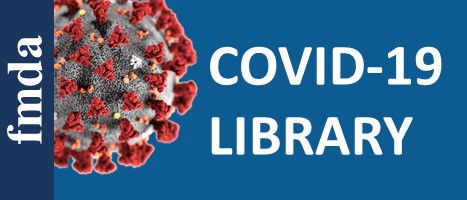Role and Responsibilities of the Nursing Home Medical Director
Introduction
In 1974, in response to perceived quality of care problems, Medicare regulations, for the first time, required a physician to serve as medical director in skilled nursing facilities and be responsible for the medical care provided in those facilities. Following the passage of the Nursing Home Reform Act in 1987, AMDA’s House of Delegates, in March 1991, passed the Role and Responsibilities of the Medical Director in the Nursing Home, a document setting forth AMDA’s vision for nursing facility medical directors. It outlines the medical director’s role in nursing facilities and is the foundation for:
- AMDA’s Certified Medical Director credential,
- AMDA’s Model Agreement for Professional Services between medical directors and facilities, and
- Resolutions on medical direction in other long term care settings.
Since 1991, the long term care field has undergone fundamental changes in medical knowledge, clinical complexity, societal and legal attitudes, demographics and patient mix, reimbursement and care settings. Increasingly, medical directors are held accountable by state legislators, regulators, and the judicial system for their clinical and administrative roles in facilities of all kinds. At least one state has enacted legislation outlining the specific regulatory responsibilities and educational pre-requisites for medical directors, and other states may follow its lead. The 2001 Institute of Medicine report Improving the Quality of Long Term Care urges facilities to give medical directors greater authority and hold them more accountable for medical services. The report further states, “Nursing homes should develop structures and processes that enable and require a more focused and dedicated medical staff responsible for patient care. These organizational structures should include credentialing, peer review, and accountability to the medical director (Institute of Medicine 2001, 140).” These developments made it apparent that several areas of AMDA’s 1991 document required careful re-examination and revision to develop a more clear vision for enhanced roles and responsibilities for medical directors.
In April 2002, AMDA convened an expert panel to review the document in the context of the evolution that is currently occurring within long term care. Their work product outlines the medical director’s major roles in the facility and is geared toward ensuring that appropriate care is provided to an increasingly complex, frail, and medically challenging population.
Role and Responsibilities
It is AMDA’s view that the roles and responsibilities of the medical director in the nursing home can be divided into four areas: physician leadership, patient care-clinical leadership, quality of care, and education.
Physician Leadership
Help the facility ensure that patients have appropriate physician coverage and ensure the provision of physician and health care practitioner services; and Help the facility develop a process for reviewing physician and health care practitioner credentials; Provide specific guidance for physician performance expectations; Help the facility ensure that a system is in place for monitoring the performance of health care practitioners; and Facilitate feedback to physicians and other health care practitioners on performance and practices.
Patient Care – Clinical Leadership
Participate in administrative decision-making and the development of policies and procedures related to patient care; Help develop, approve, and implement specific clinical practices for the facility to incorporate into its care-related policies and procedures, including areas required by laws and regulations; Review, respond to and participate in federal, state, local and other external surveys and inspections; and Help review policies and procedures regarding the adequate protection of patients’ rights, advance care planning, and other ethical issues.
Quality of Care
Help the facility establish systems and methods for reviewing the quality and appropriateness of clinical care and other health-related services and provide appropriate feedback; and Participate in the facility’s quality improvement process; Advise on infection control issues and approve specific infection control policies to be incorporated into facility policies and procedures; Help the facility provide a safe and caring environment; Help promote employee health and safety; and Assist in the development and implementation of employee health policies and programs.
Education, Information, and Communication
Promote a learning culture within the facility by educating, informing, and communicating; Assist the facility in developing medical information and communication systems with staff, patients, and families and others; Represent the facility to the professional and lay community on medical and patient care issues; Maintain knowledge of the changing social, regulatory, political, and economic factors that affect medical and health services of long term care patients; and Help establish appropriate relationships with other health care organizations.

Join FMDA!
The only organization in the state of Florida devoted to inter-professional practitioners in all specialties practicing in skilled nursing units through subacute, hospice, home care, traditional long-term care, and hospital-based care.
Library of Sepsis-Related Resources
We created a library of Sepsis-Related Resources ranging from published journal articles and reports, PowerPoint presentations, sepsis tools, and Sepsis Summit PowerPoint Presentations.
Volunteer on a Committee
If you are interesting in joining a committee, for a 1-year term, click here to complete this form.
